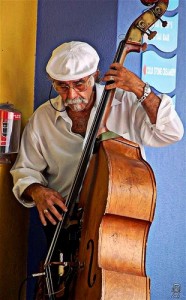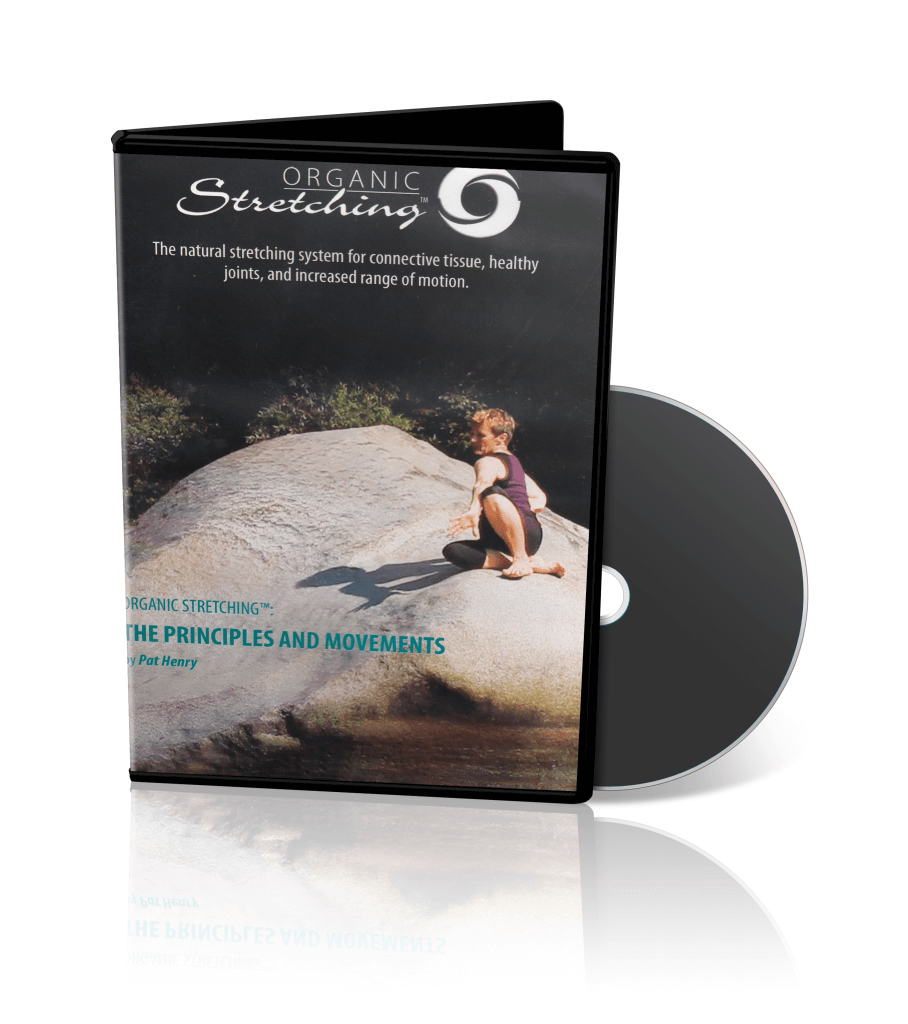Organic Stretching™ is an improvisational exercise form. You will never repeat the patterns you do from one session to the next. This creates the freedom to follow the lead of your body, to move as and where you need to rather than replicate the movements of a leader. It shares both the joys and challenges of other extemporaneous forms…music, theater, dance, and even just living your own creative life.

Jazz...the heart of improvisation
I used to call a friend of mine a “jazz cook.” He never used a recipe, but created by the seat of his pants…a little of this and a little of that. We usually first think of jazz or modern dance as examples of improvisation, but almost anything can be approached improvisationally. It is getting off the beaten track, throwing away the guide book, winging it, following your muse.
Aside from the freedom offered, what additional benefits can come from doing things in an improvisational way?
Stimulating intuition…improvisation is most often spontaneous, done without measuring and calculating the outcome and relies instead on the properties of the right brain/inner knowing to develop creative responses
Increased creativity…improvisation is usually built on a body of skills and knowledge that oversteps strictures on structure allowing flashes of pure creativity to use those tools in totally new ways
Empowerment and confidence building…with the permission inherent in improvisation to say “yes” and follow a totally new path we find we can
Developing playfulness and freedom from the inner critic
Expanding personal limits…with the absence of prescribed limits we establish new expanded zones of comfort
Meeting an inner guide…in the absence of an external model to follow, we can find our direction within, not a voice speaking to us, but more like being drawn toward something from deep inside
Improvisation also offers certain challenges to both teacher and student. These very challenges are often the source of the benefits, but it still requires a strong sense of commitment to stay with the practice until one breaks through to experience the freedom of moving to your own body’s rhythm and message. Among the possible challenges are:
More time and effort…first to gain the skills and then to learn “how to” use them without a strict format
Developing awareness and focus…improvisation requires effective observation to respond to opportunity
Taking personal responsibility…the results are totally in the hands of the improviser
Shifting control…most improvisation comes from an instinctual response more body centered than mind, by-passing thought centered reactions
Developing personal criteria…with no established strict format, composition, or script the improviser also creates the measurements for progress
Recognizing opportunities…learning to see/hear/feel the opening to respond and participate
The time and commitment required to prepare for improvisation is well worth the effort. Any artist, performer, or free-expression participant will agree that “you are never more alive” than in the improvisational mode with every nerve twitching for an opening to respond.
Photo credit: TenaciousR




I was so happy to read this piece. It supports something that happened to me this morning. You see, after attending your ‘information’ session yesterday, and knowing the future sessions are going to be a wonderful experience for me, I woke this morning and immediately thought about the ‘yesterday’, and for the first time ever, I felt like I had permission to establish and embrace something wonderful, to stretch in a different way, to go slowly – to trace a line, a pattern across and around my body: and not for one moment think that I was ‘doing it wrong’, as I have ‘often’ felt with other ‘activities’. The freedom to simply allow something as natural as stretching and then adding ‘gentle thoughts and letting my body lead’ to that stretching was like introducing myself to a me that had been dormant. From girl who was always afraid to dance, to woman who continued that mode of thought, today found me embracing a rhythm that will be welcome, ever-changing, and my song.
Marie, what a beautiful expression of your experience. I’m so pleased you shared it. I look forward to the next class and watching the unfolding.
Having practiced The Wallace Method more or less regularly from 1998 to 2004 and then less regularly since, I can look back and see that for me, the practice did reinforce all the benefits you articulate so beautifully in this brief article. And, I also find the challenges to be quite familiar.
Today, I can see how that practice was building a foundation that allowed me to go on and discover improvisational dance and other arts. For all this I am so grateful, not to mention the physical, mental and emotional benefits of all those years of organic stretching!
Thank you Pat for your beautiful articulation!
How nice to hear your thoughts on my article, TracyJoy. The concepts can find their way into almost every part of life. I love those discoveries.
I’m extremely impressed with your writing skills as smartly as} with the format for your weblog. Is that this a paid subject matter or did you modify it yourself? Anyway keep up the excellent high quality writing, it is rare to look a nice weblog like this one today..
Thank you for your comments. Unless otherwise noted, all the material on my blog is original content.
Thanks so much,i appreciate
You are entirely welcome. Enjoy the Wellness Guide and welcome to the Organic Stretching Community! Pat
Thanks for sharing these details so freely. You ought to think about writing a book.
Thank you. I have written a book, but it is not about Organic Stretching: bodymind movements. It is the story of my singlehanded voyage around the world on my 31′ sailboat. You can read more about it on my website: http://www.pat-henry.com